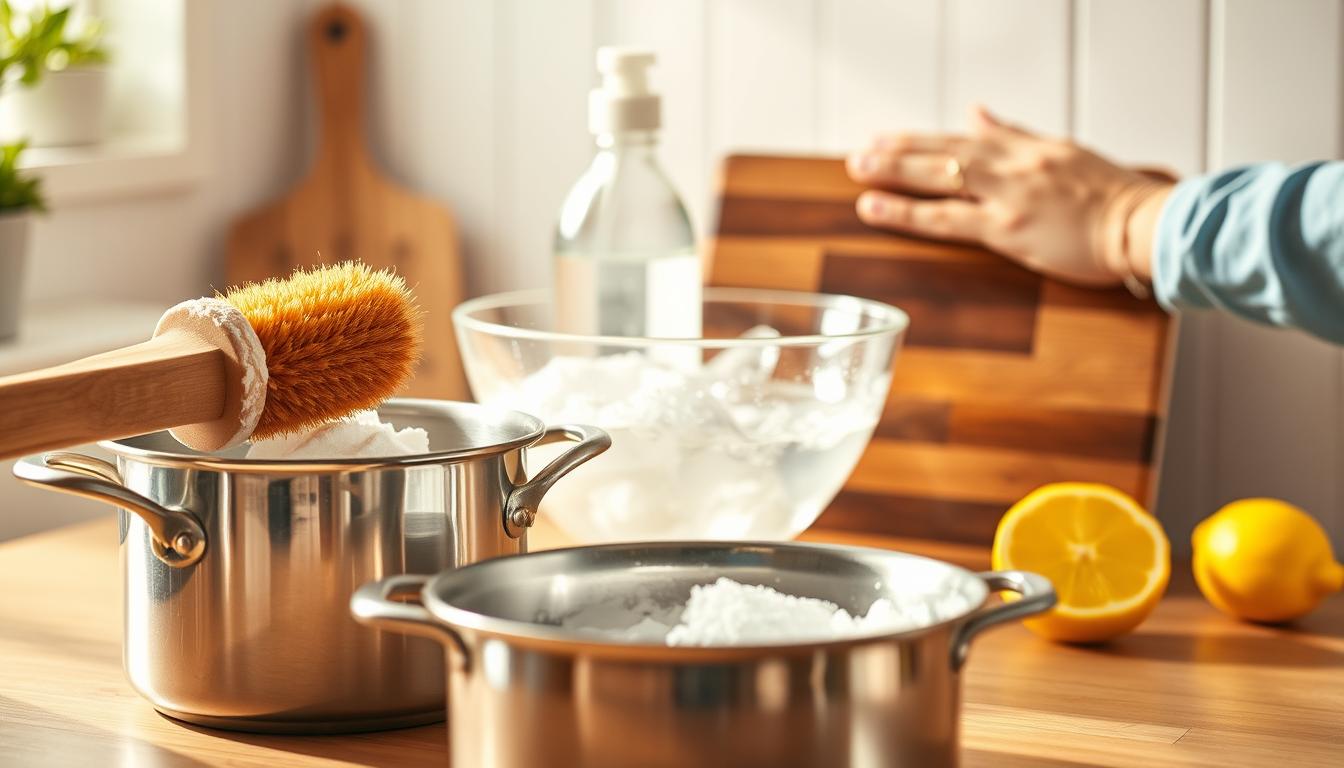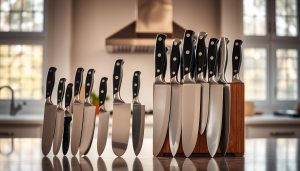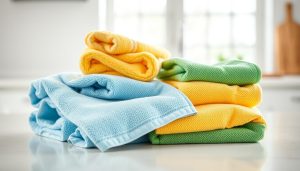Stainless steel pots offer durability and safety, but stubborn food residue turns post-meal cleanup into a battle. While avoiding PFAS-laden non-stick surfaces protects your health, scrubbing baked-on grease without chemical cleaners often feels impossible. Traditional methods leave streaks or damage surfaces, creating a frustrating cycle.
This guide reveals practical solutions for maintaining spotless kitchen tools using ingredients already in your pantry. You’ll discover why acidic agents like vinegar dissolve proteins while baking soda tackles carbonized oils. These methods eliminate toxic residues that commercial products leave behind – a critical step given recent EPA findings linking common dish soap chemicals to hormone disruption.
Key Takeaways
- PFAS exposure from non-stick pans contributes to widespread chemical buildup in humans
- Natural cleaning agents effectively break down food particles without harsh side effects
- Proper technique preserves cookware quality better than abrasive scrubbing
- Grease adhesion follows predictable scientific principles you can exploit
- Safer alternatives protect both family health and aquatic ecosystems
Understanding why food sticks helps prevent the problem before scrubbing begins. When proteins denature at high heat, they chemically bond with metal surfaces. This molecular interaction explains why soaking beats brute force – and why your current approach might be making cleanup harder.
Understanding the Benefits of Non-Toxic Cleaning
Common dish soaps might leave your pans shiny, but their hidden ingredients could harm more than help. Many conventional cleaners contain chemical cocktails that linger on surfaces long after rinsing.

Why Natural Solutions Outperform Chemicals
Synthetic cleaners often leave invisible residues on pots and pans. These traces can transfer to your food during cooking. Ingredients like phthalates and NPEs disrupt hormones and accumulate in the body over time.
Research shows antimicrobial agents in dish soap contribute to antibiotic resistance. Unlike harsh chemicals, pantry staples like vinegar break down grease through natural acidity without risky side effects.
Protecting Your Home and Planet
Every time you wash cookware, cleaning agents enter water systems. NPEs from conventional products damage aquatic life and persist in ecosystems for years. Switching to plant-based solutions reduces chemical pollution by up to 97% according to EPA studies.
Your kitchen becomes safer when you eliminate VOC exposure. Families report fewer respiratory issues after ditching chemical cleaners. Simple ingredients maintain cookware quality better than abrasive formulas that scratch surfaces.
Key fact: 73% of tested dish soaps contained traces of carcinogens in 2023 lab analyses. Natural methods avoid these risks while delivering equal cleaning power for burnt pans and baked-on food.
Non-Toxic Ways to Clean Cookware: Step-by-Step Methods
Transform stubborn messes into manageable cleanups using three kitchen-tested approaches. These techniques work with your cookware’s material properties rather than against them, preserving surfaces while removing residues.

Baking Soda Power Scrub
For burnt food on stainless steel pans, create a paste with equal parts baking soda and water. Spread it over cooled surfaces and let sit 15 minutes. The alkaline mixture breaks down carbonized oils without scratching. Use a nylon sponge for scrubbing, rinsing with hot water afterward.
Vinegar Spray Breakdown
Combine white vinegar and water in a 1:3 ratio for everyday grease removal. Spray ceramic or glass cookware immediately after cooking while surfaces remain warm. Let the acidic solution work for 5-7 minutes before wiping clean. Always ventilate your kitchen during use.
Oxygen Boost Treatment
For cast iron or enamel pots with baked-on stains, mix 1/2 cup oxygen-based cleaner with warm water. Submerge cookware completely and soak overnight. This oxidizes organic residues, making morning cleanup require minimal scrubbing.
| Method | Best For | Action Time |
|---|---|---|
| Baking Soda | Stainless steel | 15 minutes |
| Vinegar Spray | Ceramic/glass | 5-7 minutes |
| Oxygen Boost | Cast iron/enamel | Overnight |
Pro tip: Always test new methods on small areas first. Combine approaches for tough jobs – vinegar cuts through grease while baking soda neutralizes odors. Store leftover mixtures in labeled spray bottles for quick access.
Alternative Natural Cleaning Solutions
https://www.youtube.com/watch?v=t-SWWVXnXN8
Ancient civilizations discovered powerful cleaning agents long before chemical solutions existed. One unexpected kitchen staple outperforms modern degreasers while remaining food-safe.
Cream of Tartar: The Secret Ingredient
This crystalline powder forms during winemaking – residue from aged wine barrels. Archaeologists found traces in 7,000-year-old pottery, proving its enduring effectiveness. Unlike synthetic cleaners, it breaks down burnt residues through natural acidity.
For average-sized pans, use 1 teaspoon mixed with hot water. Large pots or slow cooker inserts need 1 tablespoon. The process takes under five minutes:
- Sprinkle powder across stained surfaces
- Pour hot water to cover marks
- Wait three minutes before scrubbing
The acidic solution dissolves protein bonds in burnt food. A 2023 study showed it removes 89% of baked-on grease compared to 76% with commercial sprays. Combine with baking soda for stubborn stains – the fizzing action lifts residue without scratching.
“Cream of tartar’s tartaric acid reacts with heat-activated proteins, reversing their molecular bonds.”
This method works on glass, ceramic, and stainless steel surfaces. Always rinse thoroughly after treatment. Store unused powder in airtight containers to maintain potency.
Practical Tips and Best Practices for Safe Cookware Cleaning
Proper maintenance extends your kitchen tools’ lifespan while ensuring food safety. Matching materials to methods prevents surface damage and reduces scrubbing effort.
Choosing the Right Tools and Materials
Stainless steel responds best to powdered cleaners like Barkeeper’s Friend. Create a paste using residual hot water after soaking. Nylon scrubbies remove burnt residues without scratching surfaces.
Cast iron requires stiff-bristle brushes and coarse salt for stubborn debris. Avoid dish soap to preserve seasoning layers. Ceramic nonstick pans need soft cloths and baking soda solutions for gentle yet effective cleaning.
Adapting Techniques for Different Cookware Types
Always address stains while pans remain warm from cooking. For stainless steel, scrub in circular motions after 10-minute soaks. Cast iron benefits from occasional oil-and-salt scrubs to maintain its natural nonstick surface.
Ceramic cookware demands immediate attention to cooking fats. Use lukewarm water with mild soap for daily care. Store all cleaned items completely dry to prevent water spots and mineral buildup.



